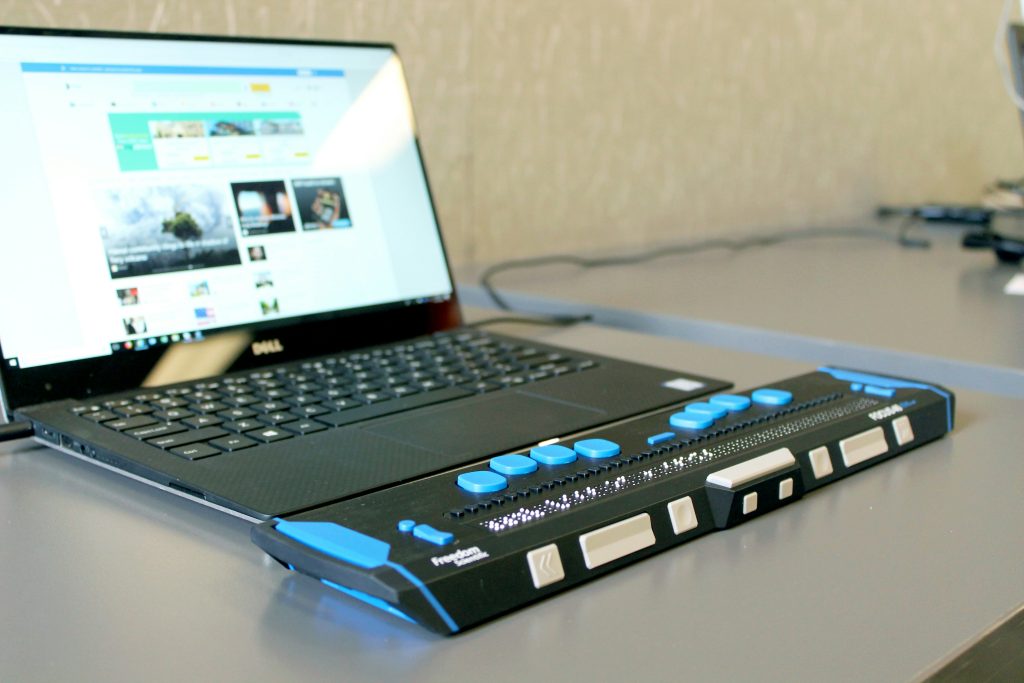Why NJ Libraries Should Ditch “Click Here” for Good!
Written by Julia Giantomasi
Published on August 6, 2025
We all want our library websites, newsletters, and social media posts to be as welcoming and accessible as the buildings we serve from. But there’s one small thing that is often overlooked and can have a big impact on user experience and accessibility. How we write out hyperlink text is important! Using simple phrases like “click here” or “learn more” is excluding users, without you even realizing. We’re going to share some tips on how to make link text clearer and more effective for everyone.
Why Unambiguous Links Matter
As we create a digital environment where all our patrons are included and welcome, it’s important to learn why an ambiguous link could affect the accessibility of our marketing efforts. Using vague phrases like “click here,” “more info,” or “learn more” creates barriers for patrons who use assistive technology. Screen readers often let users tab through all the links on a page, skipping the text in between. Learn more about how screen readers read links and hypertext.
If every link just says, “Click here,” it’s impossible to navigate. Ambiguous links could also confuse a patron with cognitive disabilities who struggles with unclear directions. And I’m sure we can all relate to scanning a page quickly and seeking out the information that we need. If we’re skimming in a time crunch and the link isn’t clear, that can also be frustrating! Making link text bold, underlined, and a different color will make it stand out on the page.
We keep referring to hypertext because naked URL’s should never exist on any marketing materials. They’re too long and messy, both visually and difficult to be read by a screen reader. Always try to paste the link in descriptive anchor text. For social media posts, utilize tools like bitly to shorten URL’s.

How to Write Unambiguous Links
Though it may seem daunting at first, writing unambiguous links is easier than you think. Check out this Writing Link Text guide by Harvard for more details. Being specific about the linked content is key. Instead of writing “click here,” describe what they’re clicking for with as many details as possible. For example: “Subscribe to the NJSL Presents Newsletter.” This gives the reader every detail they need to know where this link is taking them.
If you’re linking in the middle of the sentence, use natural language so the link reads like it is part of the sentence. Example: “Unlock a world of knowledge and resources with a NJ State Library (NJSL) card!”
Mentioning the file type can also help users know what to expect. Each month when we share our State Librarian’s Update, the hyperlink to download the update looks like this: “State Librarian’s Update – August 2025 (PDF).”
What Phrases to Avoid in Link Text on Their Own
These phrases on their own don’t tell the user where the link goes or what happens next and would have no context when read aloud in a list by a screen reader. Keep this list handy and feel free to refer back to it when creating more detailed link text, using these phrases.
- Click here
- Here
- More
- More info
- Learn more
- This link
- Read more
- See more
- Go
- Continue
- Details
- Watch
- Submit
- Link
- Download
- View
Remember that descriptive links empower patrons who rely on assistive technology. They also make your site easier for everyone: mobile users, seniors, even hurried parents trying to register their child for a craft on their lunch break! Clear and concise links also improve your website’s SEO and usability, so using these tips can help everyone.

NJSL Direct Newsletter for Libraries
Get weekly NJ library community news updates in your inbox. This newsletter serves library staff and library partners. For more library resources, visit our NJSL Office of Communications and Marketing.
-
Five Free Library Content Ideas You Can Post This Week!
Marketing Blog
-
The Secret to Social Media Hooks
Marketing Blog
-
Refresh Your Library’s Approach to Email Marketing
Marketing Blog
-
Five Free Library Content Ideas You Can Post This Week!
Marketing Blog
-
State Librarian's Update - November 2025
News
-
Webinar: Researching New Jersey Land Records Online
Genealogy Blog, NJSL Presents, Research Library


